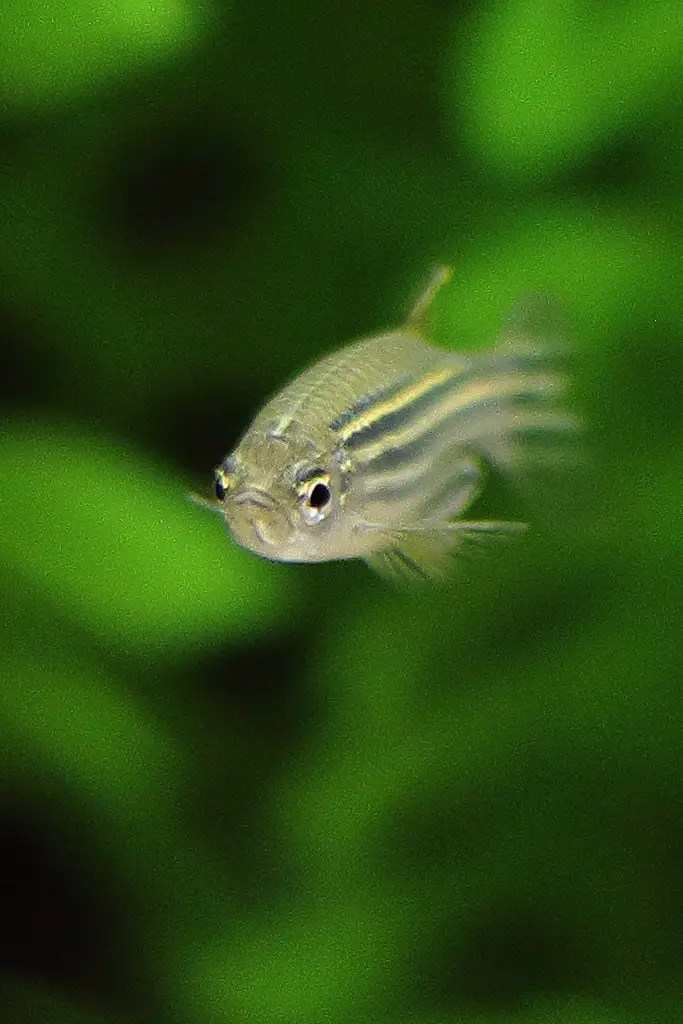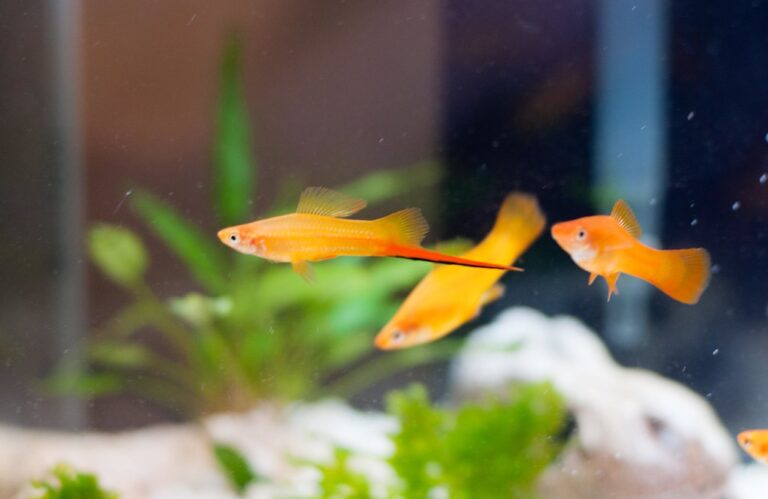Electric Blue Ram Tropical Fish: A 1st Comprehensive Guide for Aquarium Enthusiasts
Table of Contents
The shimmering iridescent blues and yellows of the Electric Blue Ram Tropical Fish, electrify any aquarium, captivating onlookers with their otherworldly appearance. For aquarium enthusiasts looking to add a touch of splendor and intrigue to their aquatic landscapes, these vibrant creatures are more than just a pretty face. In this all-encompassing guide, we’ll explore the ins and outs of caring for Electric Blue Rams, providing invaluable insights for hobbyists who wish to welcome these fish into their aquatic family.

Introduction: Electric Blue Ram
Known scientifically as Microgeophagus ramirezi, the Electric Blue Ram is a cultivar of the common Blue Ram cichlid, selectively bred for its remarkable coloration and peaceful nature. These fish originate from the hot, sluggish waters of the Orinoco River basin in Colombia and Venezuela. A member of the Cichlidae family, they are renowned for their docile temperament, especially when compared to their more pugnacious Cichlid cousins.
Physical Characteristics
The Electric Blue Ram is famous for its eye-catching electric blue color that extends over its entire body, blending with hues of gold and red across its fins. Their elegant, compact form and expressive, almost ‘smiling’ face make them a favorite among aquarists. Unlike the regular Blue Ram, these electric hues can remain vibrant in well-cared-for individuals.
Unique Features That Set Them Apart
One particularly charming feature of the Electric Blue Ram is its sparkling blue eyes, which seem to shimmer under the light of the aquarium. Their dorsal and anal fins are elongated and delicate, adding to their overall graceful appearance. It’s worth noting that males are typically larger with more pointed dorsal fins, while females tend to be slightly smaller with rounder dorsal fins.
Habitat and Tank Requirements
Creating a suitable environment for your Electric Blue Rams involves more than picking a pretty tank and filling it with water. These fish require specific conditions to thrive.
Optimal Water Conditions
Maintaining stable water conditions is vital for the health of Electric Blue Rams. They prefer a pH level between 6.0 and 7.5, with soft to moderately hard water (3-15 dGH). The temperature should ideally range between 78–85°F (25–29°C). Regular water changes are also crucial to keep the environment pristine and reduce stress on the fish.
Suitable Tank Size
When it comes to the ideal tank size for a pair of Electric Blue Rams, a 20-gallon tank is a good starting point. However, a larger tank is always preferable since it offers more territory and can help mitigate the territorial nature of these cichlids. Plant the tank generously with live or silk plants to provide ample hiding spots and mimic their natural environment.
Compatibility with Other Fish Species
Electric Blue Rams are generally peaceful and can cohabitate with other non-aggressive community fish. However, they can become territorial during breeding, so it’s important to provide plenty of space and hiding spots. Good tankmates include tetras, catfish, and peaceful bottom-dwellers like Corydoras.
Feeding and Care
Ensuring a balanced diet and regular care routine is essential in providing a long, healthy life for your Electric Blue Rams.
Recommended Diet
These cichlids are omnivores and require a varied diet. High-quality flakes or pellets should be the staple of their diet, supplemented with live or frozen food such as bloodworms, brine shrimp, and daphnia. Offering a diverse diet helps mimic the nutrients they would receive in the wild and can promote their vibrant coloring.
General Care Tips
Electric Blue Rams are fairly hardy when compared to other cichlid species, making them a good choice for beginner aquarists. However, as with any fish, they do require routine care. Regular water testing, feeding, and observing their behavior can give you insight into their well-being. Any sudden change in behavior or appearance could indicate an issue that needs addressing.
Breeding and Reproduction: Electric Blue Ram
Witnessing the breeding behaviors of Electric Blue Rams can be an exciting aspect of keeping these fish. They are known to be excellent parents, providing a fascinating insight into the family behavior of cichlids.
Insights into Breeding Behaviors
When Electric Blue Rams are ready to breed, the male will often begin to court the female, displaying intensified coloration and elaborate fin movements. Once a pair has formed, they will search for a suitable spawning site. These sites can range from flat rocks to broad leaves or even overturned pots in the aquarium. After spawning, the female will fan the eggs while the male guards the perimeter until they hatch.
Considerations for Successful Reproduction
If you are looking to selectively breed Electric Blue Rams, a separate breeding tank is recommended. The tank should be well-planted with areas of open, sandy substrate for spawning. The water parameters should be carefully maintained, and feeding a high-protein diet can encourage successful breeding. It’s also important to keep an eye out for potential stressors, as this can impact breeding behavior.
Common Health Issues
Electric Blue Rams are susceptible to the typical diseases that affect most tropical fish. However, they often demonstrate symptoms more visibly, allowing for quicker management.
Identification of Potential Health Concerns
Ich, or white spot disease, is a common health issue that affects Electric Blue Rams. Look out for small white spots on their body or fins, which is a tell-tale sign. Other common ailments include fin rot and hole-in-the-head disease. These can be caused by poor water quality or a lack of essential nutrients.
Remedies and Care Tips
Maintaining high water quality and providing a balanced diet can prevent many health issues. If you detect any signs of illness, it’s important to act quickly to quarantine affected fish and treat them with appropriate medication. Copper-based treatments are often recommended for ich, while other diseases may require antibiotic or antifungal remedies.
Expert Insights
To provide a more comprehensive understanding, we’ve included insights from experienced aquarists and experts in the field of aquarium care and fish husbandry.
- “The Electric Blue Ram’s radiant colors can truly come alive in a well-maintained, planted tank with a dark substrate.” – John Smith, Aquarist and Blogger
- “Patience is key to successfully keeping and breeding Electric Blue Rams. Do your research, set up a proper tank, and wait for the magic to happen!” – Dr. Jane Doe, Aquatic Veterinarian
- “Observing the intricacies of Electric Blue Rams’ breeding behavior can be a rewarding and educational aspect of the aquarium hobby.” – Alex Johnson, Breeding Specialist
Conclusion: Electric Blue Ram
The Electric Blue Ram is not only a visually stunning fish but also one that offers a range of engaging behaviors for aquarists to observe. By understanding their habitat preferences, dietary needs, and potential health issues, hobbyists can ensure these fish become a flourishing addition to their underwater community. As you prepare to care for Electric Blue Rams, remember to provide an optimal environment that meets their needs and enjoy the beauty and life they add to your aquarium.







